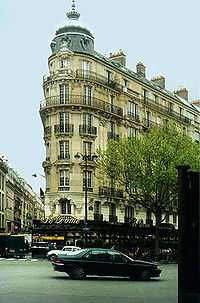Café society

Café society was the description of the "Beautiful People" and "Bright Young Things" who gathered in fashionable cafes and restaurants in New York, Paris, and London beginning in the late 19th century. Lucius Beebe is generally credited with creating the term "café society", which he chronicled in his weekly column, "This New York", for the New York Herald Tribune during the 1920s and 1930s.
Although members of café society were not necessarily members of the Establishment or other ruling class groups, they attended each other's private dinners and balls, and took holidays in exotic locations or at elegant resorts.
In the United States, café society came to the fore with the end of Prohibition in December 1933 and the rise of photo journalism, to describe the set of people who tended to do their entertaining semi-publicly, in restaurants and night clubs and who would include among them movie stars and sports celebrities. Some of the American night clubs and New York City restaurants frequented by the denizens of café society included El Morocco, the Stork Club, and the 21 Club.
In the late 1950s the term "Jet Set" began to take the place of "café society", but "café society" may still be used informally in some countries to describe people who habitually visit coffeehouses and give their parties in restaurants rather than at home.
References
- Beebe, Lucius (1967). Charles Clegg and Duncan Emrich, ed. The Lucius Beebe Reader. Garden City, N.Y.: Doubleday & Company. OCLC 720851.
- Blumenthal, Ralph (2000). Stork Club: America's Most Famous Nightspot and the Lost World of Café Society. Boston: Little, Brown & Co. ISBN 0-316-10531-7. OCLC 42072089.
External links
| Look up café society in Wiktionary, the free dictionary. |